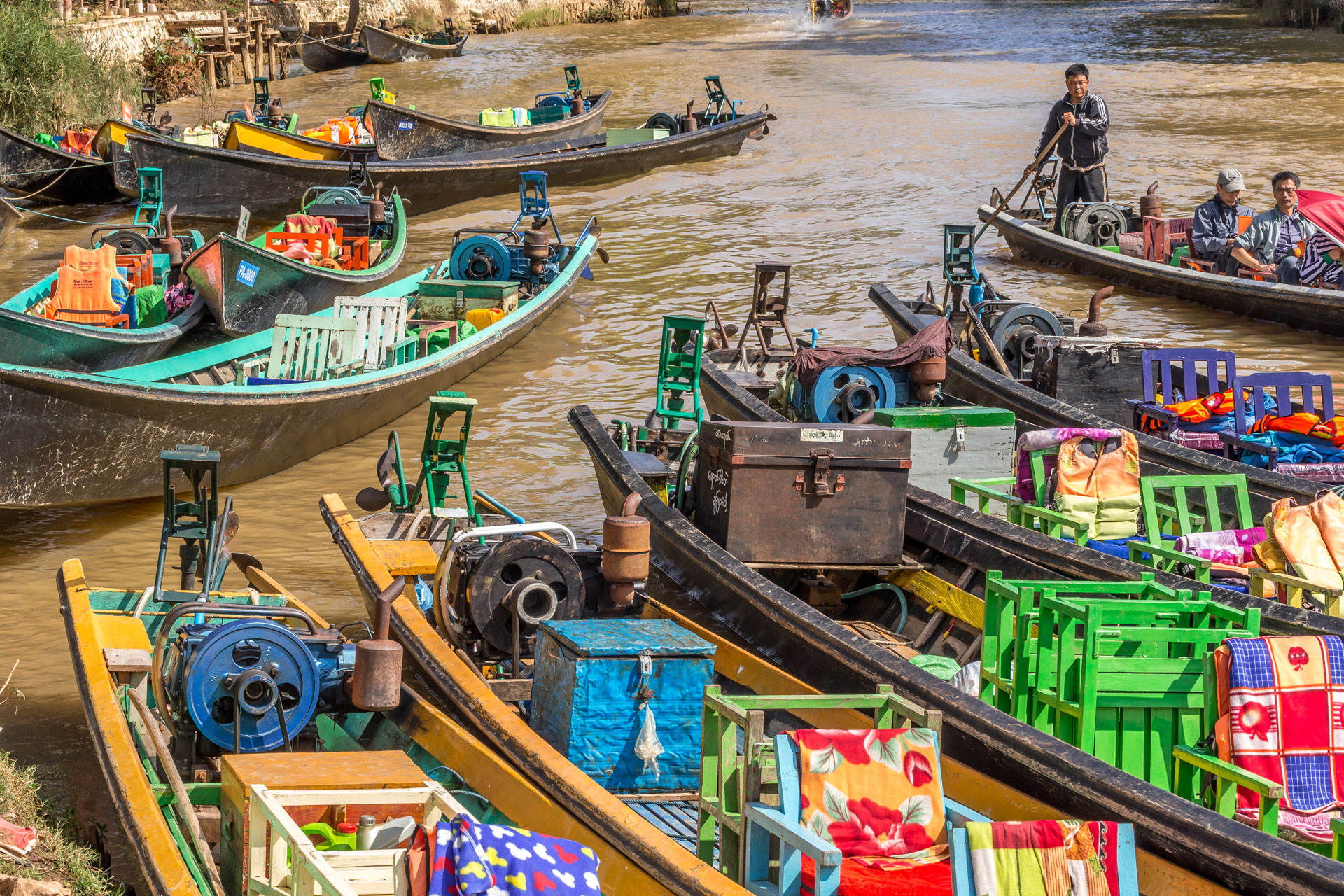We decided to do a separate blog entry of the people of Lake Inle because we were so overwhelmed by the many wonderful, incredible and amazing sights we encountered here in a mere day and a half. Lake Inle is in the eastern part of Myanmar, surrounded by small mountains. It is a lake that is only 2-3 meters deep at its deepest part and the most surprising sight is that it looks more like a vast area of farm fields and not like a lake at all. 60% of the lake’s surface are actually floating fields and 30% are water surface, like we expect a lake to look like and 10% are islands in the middle of the lake. A rare bit of solid land in a sea of water.
In the 60% of floating fields, many villages have been built on stilts and are only navigable by boat, not roads. It’s a very arresting sight and reminded us of Venice.
Everything is organized with boats as sole means of transport in mind: Small foot bridges connect the houses sometimes, weirs that are navigable for the long and shallow boats here, little canals until the main land. Little mini markets that have docks for the boats, even floating markets where the farmers sell their crops (mainly tomatoes, beans and cucumbers). All houses are connected to electricity as you can see on some pictures, many have satellite TV. Internet comes as LTE connection, even at our hotel.

50% of the lake population live off what nature provides, either fish or farm vegetables. The other 50% are making a living either as small business / workshop owner, water taxi driver, or in the booming tourist business.
Our hotel is actually in the middle of the lake and has a jetty for up to four boats. Our little bungalow is also on stilts and is connected with the main building through a little bridge. Water taxi is the only way to get here. Even most temples and pagodas are built on water and accessible only by boat.
The farmers of Inle lake are not allowed to use any chemical fertilizer or pesticide. The floating fields are long rows of floating hyacinths and grass, which form a surprisingly stable base for other plants to grow on top. Imagine a field that always has access to enough water. That’s why the farmers here can harvest three crops a year.

Chris tried out standing on a floating field, sank to his thighs into water but then stood steady with another two meters of water underneath him. Weird to imagine.
The people here often live their whole life in the same village, and are therefore not allowed to marry one of their own village. Events are celebrated at every occasion with the whole comunity participating and they happily include strangers as well, as we found out.
School, hospital, temple, shops etc. to get anywhere you need a boat. Either a long paddle boat or a motor powered long boat. The canals and rivers feeding the lake as well as the lake itself serves as a bathtub for washing oneself as well as the laundry. Often underneath a house on stilts blue nets can be seen in the water where live fish, that have been caught, are kept alive and fed until they are needed for the next market day. Fishing is one of the amazing things to watch as the long wooden boats are very wobbly and the fisher stand poised on one leg, row with the other and use both hands to lay out the nets in the water. Fascinating technique. There are ‘fishermen’ posing for tourist pictures in traditional clothing with the old round nets and then the real fishermen in leisure cloth with modern nets.
Living on the lake just seems so natural for the people here that they don’t know how amazing it is to watch them. The Government had to put a stop at using more of the lake’s 60% for floating fields, as the whole lake would have been covered by now with vegetable fields. No one ‘owns’ the water surface, you can only pass on your fields to the next generation. Let’s hope that they keep it as it is today with all the charm it has currently.
Hope that they keep it as it is today with all the charm it has currently.














